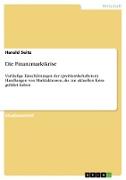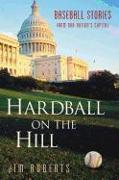- Start
- The Make Book: A Reconstruction in Phoenician Script from Ancient Artifacts
The Make Book: A Reconstruction in Phoenician Script from Ancient Artifacts
Angebote / Angebote:
This hardbound Book of Genesis is specifically designed to be close to what you might find if you were to be directly working with the original sources. It uses large Phoenician script so that you can immerse yourself into the text, and even learn Hebrew (and Phoenician) as you go. Like most ancient texts, there is no single artifact of truth. The oldest copies are found in fragments in museums across the world. In addition, this text evolved through many forms to that which you see common today. What you have here is a rich experience of the meaning of the original Book of Genesis in Phoenician script, uncluttered by todays formatting and extensions, from which you can derive your own analyses.The word Genesis in Phoenician is written ¿¿¿¿¿¿¿¿¿¿¿¿¿¿¿¿¿¿¿¿¿¿¿¿. The Phoenician alphabet is said to be the first alphabet, rising to usage around the 1300's BCE. It seems to have emerged from Proto-Sinaitic / Proto-Canaanite hieroglyphs from the 1800-1600's BCE. These gradually replaced the Sumerian/Akkadian Cuneiform script which was used for thousands of years, but was pictographic instead of alphabetic. Phoenician became the dominant common language of the time, and perhaps all things written down related to Old Testament scripture would have been written in Phoenician.Starting about 1200 BCE during the Kingdom of Judah, spoken Hebrew emerged in the area of Israel, and it was written down in Phoenician, sometimes classified as Paleo-Hebrew. After the Israelites were taken to Egypt, they started writing their scriptures down in Aramaic, which also evolved out of Phoenician. But no one is certain on how or when exactly the modern Hebrew block script emerged, called the Kthav Ashurith (¿¿¿¿¿¿ ¿¿¿¿¿¿¿¿¿¿). It is said that the Torah was given by Moses in the Assyrian alphabet, later changed to Phoenician script and then to the modern Hebrew script. But some still think it was originally written in Paleo-Hebrew (or Phoenician), which was the common script at the time. Hence, we have reconstructured such a text to see what it might have looked like, and for you to learn Phoenician.Phoenicia (Φοιν¿κη) was a Semitic group, and the word derives from the color extracted from a sea snail to dye their clothes purple. They wrote in Phoenician, a 22 lettered, all consonant alphabet, which eventually became Hebrew.
Folgt in ca. 15 Arbeitstagen



